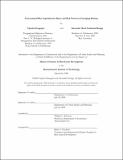| dc.contributor.advisor | William C. Wheaton. | en_US |
| dc.contributor.author | Dasgupta, Vipasha | en_US |
| dc.contributor.author | Knapp, Alexander Ward Nathaniel | en_US |
| dc.contributor.other | Massachusetts Institute of Technology. Center for Real Estate. | en_US |
| dc.date.accessioned | 2010-10-22T19:48:14Z | |
| dc.date.available | 2010-10-22T19:48:14Z | |
| dc.date.copyright | 2008 | en_US |
| dc.date.issued | 2008 | en_US |
| dc.identifier.uri | http://hdl.handle.net/1721.1/59495 | |
| dc.description | Thesis (S.M. in Real Estate Development)--Massachusetts Institute of Technology, Dept. of Architecture, Center for Real Estate, 2008 [first author]; and, (S.M. in Real Estate Development)--Massachusetts Institute of Technology, Dept. of Urban Studies and Planning, Center for Real Estate, 2008 [second author]. | en_US |
| dc.description | Includes bibliographical references (leaves 70-72). | en_US |
| dc.description.abstract | As international property investors increasingly understand and appreciate the benefits of diversification and look to achieve higher returns, cross-border real estate investment has increased. In this context, the issue of the country risk premium is crucial as these types of investments present a wide range of risk and return opportunities that need to be understood and, ideally, quantified. Naturally, the decision of whether or not to invest begins with an assessment of how much additional return is required to compensate for the additional risk associated with a particular country. Establishing these risk premiums is particularly difficult since cross-border investors often lack local market knowledge and encounter transparency issues when trying to gain an understanding of the market. These questions matter particularly to institutional investors looking to make allocation decisions across geographically diversified holdings. Given the problem of appropriate pricing in emerging markets, this study will attempt to forecast capitalization rates for these markets using widely available macroeconomic data and property-related market ratings. This cross-sectional study will employ univariate and multivariate regressions. We will initially identify various factors with a significant relationship to cap rates in markets where real estate pricing data is available. Office cap rate data from Real Capital Analytics (RCA), Jones Lang LaSalle-LaSalle Investment Management and Investment Property Databank (IPD) for sets of 23 to 25 overlapping countries will be used as dependent variables in the analysis. Once the significant factors have been established, we will extrapolate the model out to markets that have the necessary background data, but lack usable cap rate information. In other words, we will forecast cap rates for countries that lack data - as is typical for emerging markets. | en_US |
| dc.description.abstract | (cont.) Using this forecast, we can then estimate a "risk factor" by subtracting an appropriate risk-free rate and by adding a income growth proxy - the country's GDP growth. This study hopes to reveal key factors that will help institutional investors looking to invest in countries other than their own. It will attempt to provide a basic guideline of cap rates and risk-factors for office properties in emerging markets. Understanding the drivers behind pricing differences can help us better predict how cap rates would change with underlying changes in local macroeconomic, political, and property market factors. | en_US |
| dc.description.statementofresponsibility | by Vipasha Dasgupta and Alexander Ward Nathaniel Knapp. | en_US |
| dc.format.extent | 75 leaves | en_US |
| dc.language.iso | eng | en_US |
| dc.publisher | Massachusetts Institute of Technology | en_US |
| dc.rights | M.I.T. theses are protected by
copyright. They may be viewed from this source for any purpose, but
reproduction or distribution in any format is prohibited without written
permission. See provided URL for inquiries about permission. | en_US |
| dc.rights.uri | http://dspace.mit.edu/handle/1721.1/7582 | en_US |
| dc.subject | Architecture. | en_US |
| dc.subject | Urban Studies and Planning. | en_US |
| dc.subject | Center for Real Estate. | en_US |
| dc.title | Forecasting office capitalization rates and risk premia in emerging markets | en_US |
| dc.type | Thesis | en_US |
| dc.description.degree | S.M.in Real Estate Development | en_US |
| dc.contributor.department | Massachusetts Institute of Technology. Center for Real Estate | en_US |
| dc.contributor.department | Massachusetts Institute of Technology. Department of Architecture | |
| dc.contributor.department | Massachusetts Institute of Technology. Department of Urban Studies and Planning | |
| dc.identifier.oclc | 315839947 | en_US |
